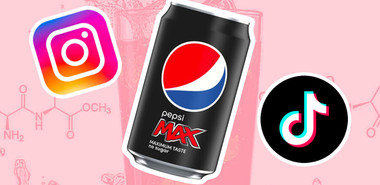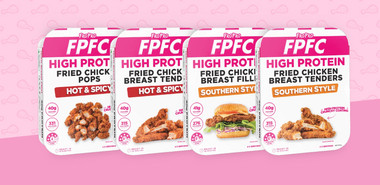| Food | Carbs per 100g (g) | Calories per 100g | Protein per 100g (g) |
|---|---|---|---|
| Almond Flour | 10 | 590 | 21 |
| Coconut Flour | 18 | 400 | 19 |
| Flaxseed Meal | 1.6 | 534 | 18.3 |
| Eggs | 1.2 | 155 | 13 |
| Chicken Breast | 0 | 165 | 31 |
| Salmon | 0 | 208 | 20 |
| Broccoli | 7 | 34 | 2.8 |
| Spinach | 3.6 | 23 | 2.9 |
| Avocado | 9 | 160 | 2 |
| Almonds | 22 | 579 | 21 |
| Cauliflower | 5 | 25 | 1.9 |
| Zucchini | 3 | 17 | 2.7 |
| Chia Seeds | 42 | 486 | 16.5 |
| Greek Yogurt (Full-Fat) | 4 | 59 | 10 |
| Beef Steak | 0 | 271 | 25 |
| Pork Chops | 0 | 242 | 27 |
| Tofu | 1.9 | 144 | 8 |
| Asparagus | 3.9 | 20 | 2.2 |
| Kale | 9 | 49 | 4.3 |
| Mushrooms | 3.3 | 22 | 3.1 |
| Whole Wheat Bread | 41 | 247 | 13 |
| Ezekiel Bread | 45 | 250 | 15 |
| Cloud Bread | 2.5 | 74 | 9 |
| Low-carb Flour Tortillas | 19 | 218 | 5 |
Carbohydrates get a bad rap as “bad” but they’re actually an important source of daily energy.
Most carbs come from grains and plants, but processed foods often contain low-quality carbs like starch and added sugars. These are the types of carbs you want to limit.
Either way, if you’re looking to lower your carb intake, there are plenty of healthy and tasty low-carb alternatives in stores and online.
Below we’ve gathered 50+ of the best low-carb alternatives of your favourite foods.
Naturally Low-Carb Foods 🥩🫐🥚
Many low-carb foods pack quite a nutritional punch, and you can easily incorporate them into a balanced diet. View this summary of nutritious low-carbohydrate foods:
- Meat, poultry, fish, and other seafood
- Full-fat dairy products
- Eggs
- Above-ground vegetables (appropriate for all carb restriction levels)
- Berries
Non-starchy vegetables under 10 grams of carbs per serving:
- Leafy greens
- Spinach
- Asparagus
- Broccoli
- Cabbage
- Cauliflower
- Cucumbers
- Green beans
- Mushrooms
- Peppers
- Tomatoes
- Zucchini
Low-carb nuts and seeds with protein:
- Almonds (Find on YoKeto or Amazon)
- Cashews (Find on Woolworths or iHerb)
- Peanuts (Find on Woolworths or Amazon)
- Pistachios (Find on Coles or iHerb)
- Pumpkin seeds (Find on Woolworths or iHerb)
- Sunflower seeds (Find on Woolworths)
- Walnuts (Find on Woolworths or iHerb)
Soy products (low-carb and high-protein)
- Soy milk (Find on Woolworths or Amazon)
- Tofu (Find on Woolworths or Amazon)
Pasta Alternatives Low Carb 🍝
Spaghetti Squash Noodles
This starchy vegetable is perfectly named, as you can separate the squash’s cooked flesh into string-like “spaghetti” with a fork.
As a bonus, spaghetti squash only has 7 grams of carbs in a 100-gram serving — about 20% of the carbs in a similar amount of pasta. This versatile squash also serves up a veritable feast of vitamins.
Cabbage Noodles
Sturdy, sheet-like cabbage noodles are a respectable pasta substitute. Whole cabbage leaves are ideal for baked lasagna sheets.
For a pad thai or lo mein dish, cut the cabbage head into thinly sliced noodles. At only 6 grams of carbs for a 100-gram serving, cabbage makes an ideal pasta alternative. This earthy vegetable also packs lots of Vitamins C and K plus folate and additional vitamins and minerals.
Spiralized Vegetable Noodles
Spiralized vegetable noodles make an attractive pasta alternative. These low-carb substitutes also contain lots of fibre, vitamins, and minerals. Beets, carrots, cucumbers, turnips, and zucchini are the most popular spiralized vegetables. Keep the peels on for extra beneficial fibre.
Unconventional Spaghetti Alternatives
These three rather unusual spaghetti substitutes pack respectable amounts of protein. Purchase these products from online retailers, or investigate your local healthy foods supermarket’s pasta aisle.
- Black bean spaghetti (Find on Yoketo or iHerb)
- Edamame spaghetti (Find on Yoketo or iHerb)
- Adzuki bean spaghetti (Find on Amazon)
Versatile Vegetable Noodles
Try these plant-based noodles for your next pasta or stir fry dish. Obtain these products through online retailers, or visit your nearby healthy foods grocery store’s pasta section.
- Kelp noodles (for stir fries, salads, and soups)
- Shirataki noodles (from konjac plant, few calories and very filling)
- Tofu noodles (low-carb noodles with lots of protein)
Low Carb Bread Alternatives 🥖
- Whole Wheat Bread: This versatile bread has 12 grams of carbs per slice. Great for a sandwich, or top with your favourite low-carb spread.
- Ezekiel Bread: This bread contains six sprouted whole grains and has 15 grams of carbs per slice. Ezekiel bread contains wheat, so it’s not suitable for people with celiac disease or non-celiac gluten sensitivity. (Find on Pure Life Bakery)
- Cloud Bread: This protein-rich bread serves as an English muffin replacement or sandwich base. It’s popular with low-carb and Keto diet enthusiasts.
- Low-carb Flour Tortillas: The carb count varies, but it’s drastically lower than regular flour tortillas. These good-sized tortillas make a great base for grilled toppings. Or, make a wrap filled with low-carb veggies. (Find on Amazon)
Bonus: Plant-Based Breads 🌱🍞
Feel free to experiment with these bread substitutions. These plant-based foods are very low in carbs, and they also offer intriguing textures and flavours.
- Eggplant or Portobello Mushroom Disks: Use these grilled or baked disks for a burger base. Or, slice the eggplant lengthwise to make a deli-style sandwich base.
- Cabbage, Collard, or Lettuce Leaves: Use the biggest-possible leaves to make your favorite wraps. Or, fill this low-carb taco shell with your favorite ingredients.
- Nori Sheets: These dried seaweed sheets are ideal for wraps. They tend to become soggy when filled with ingredients, so don’t make the wrap until you’re ready to enjoy it.
Low Carb Pizza Crusts 🍕
- Cauliflower pizza crust (resembles regular thin pizza crust)
- Red beet pizza crust
- Sweet potato pizza crust
- Scooped-out baked zucchini pizza base (add your favourite toppings)
- Portobello mushroom cap pizza base (add your favourite toppings)
Low Carb Flour Alternatives (Non-Wheat) 🥥🥜
A well-stocked grocery store should carry a good variety of wheat flour substitutes. Note that some flours do not lend themselves to certain types of recipes.
- Almond Flour: This frequently used flour is made from crushed almonds. At only 3 grams of total carbs per 14-gram serving, it’s an ideal flour substitute. For baking purposes, use almond flour as a 1:1 substitute for wheat flour. However, the finished product might be a bit spongy. Almond flour also works well as a low-carb breading material.
- Chia Flour: This flour is composed of ground chia seeds, which absorb lots of moisture. A 12-gram serving of ground chia seeds has 5 grams of total carbs. Although not often used for baking, whole and ground chia seeds can serve as the base for a tasty low-carb pudding that’s also high in fiber.
- Coconut Flour: Derived from coconut flesh, this powdery flour has a nice mild taste that works well in many desserts. A 15-gram serving has 9 grams of total carbs. Note that coconut flour readily absorbs liquid. If you’re making a 1:1 substitute for wheat flour, add more liquid ingredients to avoid a dry result.
- Flaxseed Meal: Composed of ground flaxseeds, flaxseed meal has 4 grams of total carbs per 14-gram serving. Flaxseed meal also absorbs lots of liquid, so it’s often mixed with other low-carb flours for baking.
- Oat Fiber: Made from crushed oat husks, oat fiber is often combined with other low-carb flours in baked goods. A 4-gram serving of oat fiber contains 5 grams of total carbs.
Other Tasty Low Carb Alternatives 🍆🍠
- Grilled eggplant slices with toppings (delicious!)
- Grain-free protein pancakes (delicious!)
- Cauliflower or celeriac couscous
- Cauliflower “mashed potatoes”
- Whole-grain pasta topped with carb-friendly sauce or veggies
- Sweet potatoes, yams, or parsnips (swapped for white potatoes)
- Versatile brown rice (great for many dishes, swapped for white rice)
How Carbohydrates Benefit Your Body ✅
- Energy Source: Carbs are essential for energy, powering your brain, muscles, and organs. Fibre, a type of carb, helps you feel full and keeps your digestive system healthy.
- Weight Control: Eating fibre-rich carbs like whole grains, fruits, and veggies can help with weight management by making you feel full with fewer calories.
- Disease Prevention: Whole grains and dietary fibre can reduce the risk of heart disease, obesity, and type 2 diabetes.
Reducing Carbs for Medical Reasons 😷
Certain types of medical conditions may require you to considerably reduce your overall carbohydrate intake. In some cases, you may only need to avoid one type of carb.
- Celiac Disease: Avoid all wheat and gluten to prevent intestinal damage.
- Diabetes: Monitor and limit carb intake to control blood sugar levels.
- Lactose Intolerance: Avoid dairy-containing carbs or opt for lactose-free alternatives.
Low Carb for Weight Loss 👍🏻
Cutting out low-nutrient carbs (like sweets and sodas) is good for weight loss. But, include nutrient-rich carbs (whole grains, fruits, veggies) in moderation for a balanced diet.
Low Carbs for Diabetes 🍪
Diabetics should balance their carb intake, similar to non-diabetics, to avoid carb overload. Aim for 45 to 60 grams of carbs per meal, following a dietitian’s advice.
Do Carb Guidelines Work? 📋
The 2020-2025 Dietary Guidelines in the U.S. and Australia suggest getting 45–65% of our energy from carbs. Dietitians and doctors often use these guidelines to advise people. But, a 2021 study in the “Journal Nutrients” says these guidelines are too rigid and don’t consider individual needs. The study also links these high-carb recommendations to the growing rates of obesity and type 2 diabetes in the U.S. That’s why more people are now looking at carb alternatives.
Cons of Low-Carb Diet ❌
Low-carb diets often substitute carbs with high-protein and high-fat foods, potentially leading to a nutrient imbalance.
While effective for short-term weight loss, the long-term effects are unclear and may not be suitable for everyone, especially those with metabolic conditions.
Low Carb Alternatives FAQs
Do I need to cut carbs to lose weight?
Not necessarily. It’s more about balancing your diet. Reducing carbs, especially the less nutritious ones like sugary snacks and processed foods, can help. But, you don’t have to cut them out completely. It’s about eating healthier carbs in moderation
What foods fill you up but are low in carbs?
Foods high in protein and fibre are your go-to. Think lean meats like chicken and fish, eggs, and plenty of non-starchy vegetables like leafy greens, broccoli, and cauliflower. These keep you full without loading up on carbs.
What meals can I have with no carbs?
Zero-carb meals are rare, as most foods have some carbs. However, meals focusing on meats, poultry, fish, and some cheeses can be very low in carbs. Think grilled chicken breast with a side of steamed veggies or a beef steak with a leafy green salad (minus high-carb dressings).
Can you survive on a no carb diet?
Technically, yes, but it’s not recommended for the long term. Carbs are a primary energy source, and completely cutting them out can lead to nutrient deficiencies and health issues. It’s better to aim for a balanced diet with healthy carbs, proteins, and fats.




